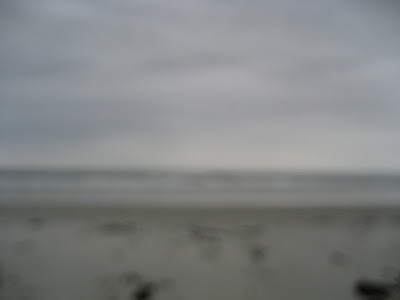




 Beachcombing last week held some interesting, if sad, finds. Though not officially announced by Florida authorities, red tide has been making an impact throughout Florida's coastal waters in the last few weeks (perhaps longer). Red tide is an algal bloom thought to be caused at least some of the time by human activities, I suppose this to mean dumping of waste water high in nitrogen and other nutrients into our water systems. This feeds a population explosion of algae, some species of which contain potent neurotoxins, which can cause mass deaths of fish and other wildlife. In really serious blooms it can affects humans as well, usually on a respiratory level, or through shellfish consumption. Because of this problem coupled with a few big storms, dead fish littered the high tide mark. Before I became I aware of this news, I thought it very odd that birds and crabs seemed largely uninterested, whether they were fully satiated or knew there to be something dangerous about the feast I do not know.
Beachcombing last week held some interesting, if sad, finds. Though not officially announced by Florida authorities, red tide has been making an impact throughout Florida's coastal waters in the last few weeks (perhaps longer). Red tide is an algal bloom thought to be caused at least some of the time by human activities, I suppose this to mean dumping of waste water high in nitrogen and other nutrients into our water systems. This feeds a population explosion of algae, some species of which contain potent neurotoxins, which can cause mass deaths of fish and other wildlife. In really serious blooms it can affects humans as well, usually on a respiratory level, or through shellfish consumption. Because of this problem coupled with a few big storms, dead fish littered the high tide mark. Before I became I aware of this news, I thought it very odd that birds and crabs seemed largely uninterested, whether they were fully satiated or knew there to be something dangerous about the feast I do not know.
I found myself taking close shots of their gaping mouths, so alien and so vulnerable.














